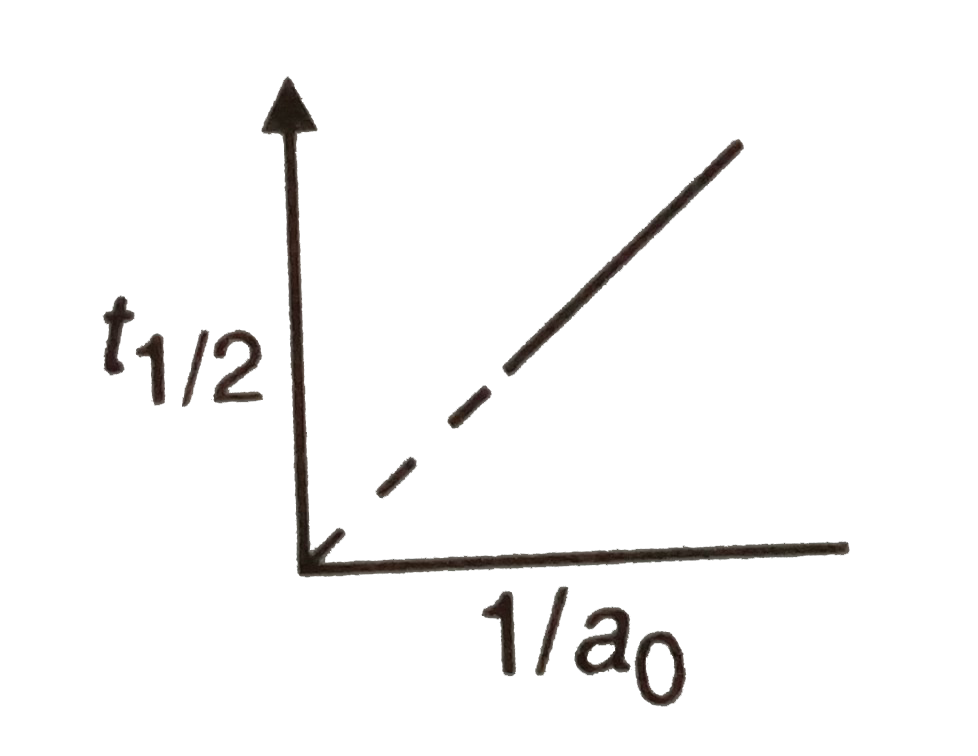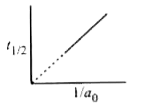The following graph shows how t1/2 (half-life) of a reactant R changes with the initial reactant concentration a0.
The order of reaction will be

A
0
B
1
C
2
D
3
Video Solution
Text Solution
The correct Answer is:C
t1/2∝1an−10
an−10=a0 (given)
:. n−1=1⇒n=2
|
Updated on:21/07/2023
Topper's Solved these Questions
- BOOK - ERRORLESSCHAPTER - CHEMICAL KINETICSEXERCISE - NCERT BASED QUESTIONS (Collision Theory, Energy of Activation and Arrhenius Equation)54videos
CHEMICAL KINETICS
- BOOK - ERRORLESSCHAPTER - CHEMICAL KINETICSEXERCISE - NCERT BASED QUESTIONS (Photochemical Reaction)4videos
CHEMICAL KINETICS
- BOOK - ERRORLESSCHAPTER - CHEMICAL KINETICSEXERCISE - Assertion & Reason6videos
CHEMICAL KINETICS
- BOOK - ERRORLESSCHAPTER - CARBOXYLIC ACIDSEXERCISE - Assertion & Reason5videos
CARBOXYLIC ACIDS
- BOOK - ERRORLESSCHAPTER - CHEMISTRY IN EVERYDAY LIFE EXERCISE - Assertion & Reason4videos
CHEMISTRY IN EVERYDAY LIFE
Similar Questions
Knowledge Check
- Question 1 - Select One
The following graph shows how t1/2 (half-life) of a reactant R changes with the initial reactant concentration a0. The order of the reaction will be
 A0B1C2D3
A0B1C2D3 - Question 2 - Select One
The half-life of a reaction is halved as the initial concentration of the reaction is doubled. The order of the reaction is
A0.5B1C2D0 - Question 3 - Select One
Half life of a reaction becomes half when intial concentrations of reactants are made double. The order of the reaction will be:
A1B2C0D3
Draw a schematic graph showing how the rate of first order reaction changes with change in concentration of reactants.
View SolutionIf half-life period of a reaction is inversely proportional to initial concentration of the reactant, what is the order of reaction ?
View SolutionThe t1/2 of a reaction is halved as the initial concentration of the reactant is doubled then order of reaction :-
View SolutionThe half life period of a reaction is halved as the initial concentration of the reactants is doubled. The order of reaction is:
View SolutionIf half-life period of a reaction is inversely proportional to initial concentration of the reactant, what is the order of reaction ?
View Solution

